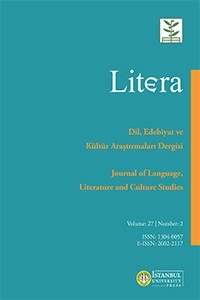How to Become an Unreliable Narrator: The Case of Dr. Sheppard in The Murder of Roger Ackroyd by Agatha Christie
Narratological studies on “unreliability” have become even more relevant in an epoch in which the term post-truth was coined. The topic has indeed generated over the past years a large number of investigations, ranging from disquisitions on the very definition of “unreliability” to more practical, but not less complex, debates on how to detect an unreliable narrator (Shen, 2015). Taking Agatha Christie’s detective novel The Murder of Roger Ackroyd (1926/2006) as a case study, this paper attempts to argue that the narrator’s strategies to produce an unreliable account could be theoretically framed by the “synthetic approach,” formulated by Nünning (2005). To support this point, the analysis of the narrator’s unreliability is based on close readings of the text and is divided into two sections. The first aims to highlight the rhetorical elements, while the second attempts to point out the cognitivist/constructivist ones. The paper concludes that, coherently with Nünning’s synthetic approach, the narrator’s self-presentation as reliable suggests a conception of unreliability as a textual property encoded by an authorial agency (rhetorical approach) and, simultaneously, as a result of an interpretive negotiation between readers and texts (cognitivist/constructivist approach).
___
- Booth, W. C. (1983). The rhetoric of fiction. Chicago, IL: University of Chicago Press. (Original work published 1961)
- Christie, A. (2006). The murder of Roger Ackroyd. London, UK: HarperCollins. (Original work published 1926)
- Christie, A. (2017). Le meurtre de Roger Ackroyd (F. Jamoul, Trans.). Paris, FR: Le Livre de Poche.
- Coste, D. & Pier, J. Narrative levels. In P. Hühn, J. C. Meister, J. Pier & W. Schmid (Eds.), The living handbook of narratology. Retrieved from http://www.lhn.uni-hamburg.de/article/narrative-levels-revised-version-uploaded-23-april-2014
- Genette, G. (1972). Figures III. Paris, FR: Seuil.
- Nünning, A. F. (2005). Reconceptualizing unreliable narration : Synthesizing cognitive and rhetorical approaches. In J. Phelan & P. J. Rabinowitz (Eds.), A Companion to narrative theory (pp. 89–107). Oxford, UK: Blackwell.
- Olson, G. (2003). Reconsidering unreliability : Fallible and untrustworthy narrators. Narrative, 11, 93–109. Retrieved from https://www.jstor.org/stable/20107302
- Phelan, J. (2005). Living to tell about it : A rhetoric and ethics of character narration. London, UK: Cornell University Press.
- Phelan, J., & Martin, M. P. (1999). The lessons of ‘Weymouth’: Homodiegesis, unreliability, ethics, and the remains of the day. In D. Herman (Ed.), Narratologies: New perspectives on narrative analysis (pp. 88–109). Columbus, OH: Ohio State University Press.
- Shen, D. (2015). Unreliability. In P. Hühn, J. C. Meister, J. Pier & W. Schmid (Eds.), The living handbook of narratology. Retrieved from http://www.lhn.uni-hamburg.de/article/unreliability
- Başlangıç: 1954
- Yayıncı: İstanbul Üniversitesi
